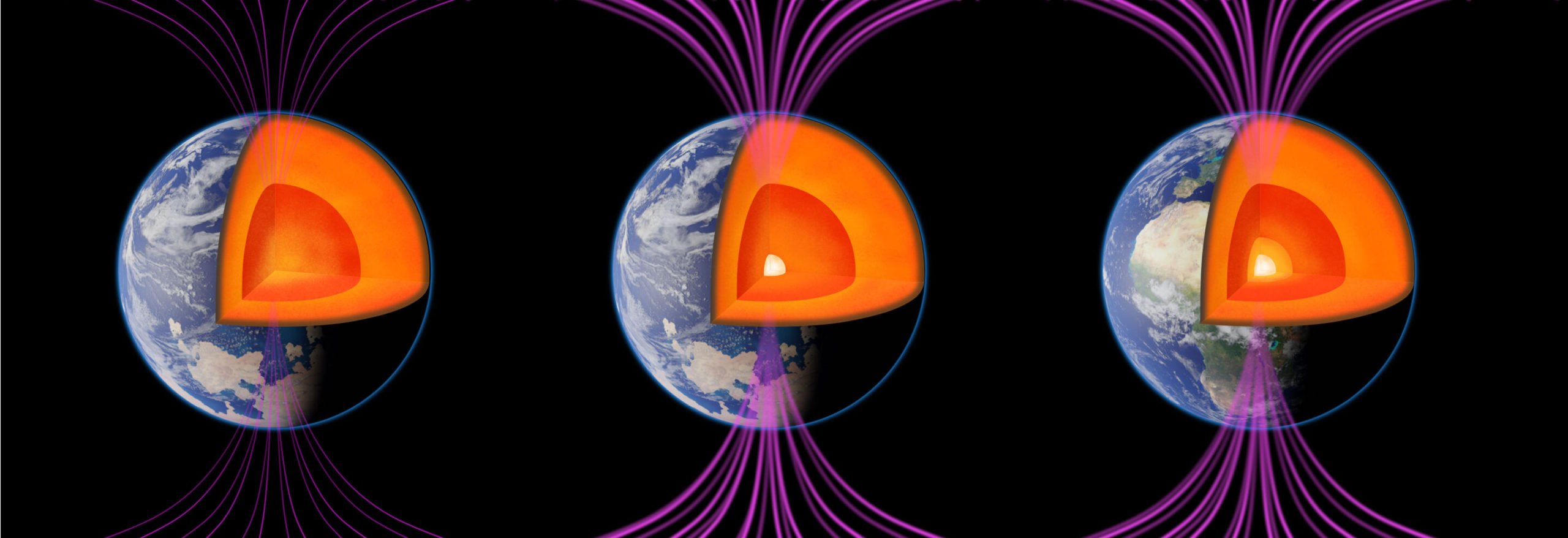About 2,900 kilometers below our feet, liquid iron swirling in the Earth’s outer core generates our planet’s protective magnetic field. This magnetic field is invisible, but vital to life on Earth because it protects the planet from solar wind Radiation streams from the sun.
“The inner core is very important,” said John Tarduno, professor of geophysics in the Department of Earth and Environmental Sciences and dean of Arts, Science and Engineering Research at the University of Rochester. “Before the inner core started growing, the magnetic field was about to collapse, but as soon as the inner core started growing, the field was renewed.”
Researchers have identified several important dates in the history of the inner core, including a more accurate estimate of its age. The research provides clues about Earth’s history and future development and how it became a habitable planet, as well as the evolution of other planets in the solar system.
Information about ancient rocks
The Earth is made up of layers: the crust where life dwells; the mantle, the thickest layer on Earth; The molten outer core and the solid inner core, which in turn consists of an outer and deeper core.
The Earth’s magnetic field is created in its outer core, where the rotation of liquid iron causes electric currents, giving rise to a phenomenon called geodynamo that produces the magnetic field.
Because of the magnetic field’s relationship to the Earth’s core, scientists have been trying for decades to determine how these two elements have changed over the course of our planet’s history. They cannot directly measure the magnetic field due to the location and extreme temperatures of the materials in the core. Fortunately, minerals that rise to the Earth’s surface contain tiny magnetic particles that block the direction and strength of the magnetic field as the minerals cool off from their molten state.
To better constrain the lifespan and growth of the inner core, Tarduno and his team used a carbon dioxide laser.two and the Laboratory’s Superconducting Quantum Interferometer (SQUID) for the analysis of feldspar crystals from anorthosite rocks. These crystals have tiny magnetic needles inside that are “ideal magnetic recorders,” Tarduno said.
important dates
By studying the magnetism trapped in ancient crystals – a field known as palaeomagnetism – researchers have identified two important new dates in the history of the inner core:
550 million years ago – The moment the magnetic field began to rapidly renew itself after a near-collapse 15 million years earlier. The researchers attribute the rapid rotation of the magnetic field to the formation of a solid inner core that recharges the molten outer core and restores the strength of the magnetic field.
450 million years ago – The moment when the structure of the growing inner core changed, indicating the boundary between the inner and outer core. These changes in the inner core coincide with simultaneous changes in the structure of the upper mantle, due to plate tectonics at the surface.
“As we confine the age of the inner core more precisely, we can exploit the fact that the present inner core has two parts,” Tarduno said. “The movements of the tectonic plates on the Earth’s surface have indirectly affected the inner core, and the history of these movements is imprinted deep inside the earth in the structure of the inner core.”
Avoid a Martian-like fate
A better understanding of the dynamics and growth of the inner core and magnetic field has important implications, not only for discovering Earth’s past and predicting its future, but also for revealing the ways in which other planets can form magnetic shields and maintain the necessary conditions. life.
Researchers believe that Mars, for example, once had a magnetic field, but that field has dissipated, leaving the planet exposed to the solar wind and without oceans on its surface. While it’s unclear whether the absence of the magnetic field caused the same fate for our planet, “Earth would certainly lose a lot of water if its magnetic field did not regenerate,” Tarduno noted. “The planet will be much drier and different from the planet today.”
The researcher said that with regard to the evolution of the planets, the research emphasizes the importance of the magnetic shield and a mechanism to support it. “This research really highlights the need for something like a growing inner core that maintains the magnetic field for the life of a planet – many billions of years.”

“Friendly zombie fanatic. Analyst. Coffee buff. Professional music specialist. Communicator.”

